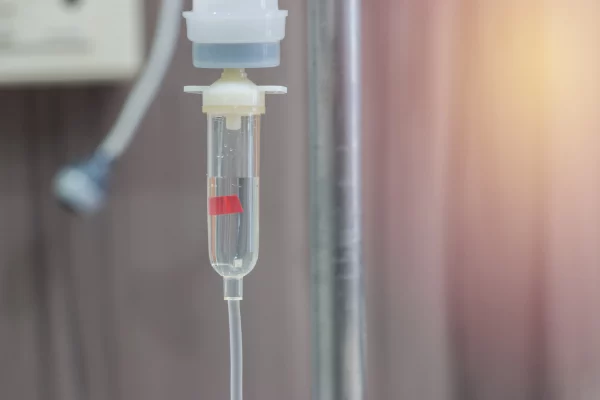The Simplest Stem Cell Injection Route May Be the Most Risky

You would think that since an IV is the simplest and least invasive form of application of stem cells, it would also be the safest. However, many years ago, I was part of an organization that investigated some deaths in Asia related to IV stem cell infusions. Now a new study may explain why IV stem cell injections can be so risky.
What Is an IV?
IV means intravenous, or delivering something through a vein. It’s a simple way to gain access to the bloodstream and requires the least amount of medical skill. In fact, everyone from a medical assistant to a nurse can start an IV, so it’s perhaps the most common way stem cells are delivered.
Are There Risks Associated with Delivering Stem Cells IV?
You would think that since starting an IV is simple and low risk, this would also be the least risky way that stem cells could be delivered. However, it’s likely the opposite, in that IV is one of the riskiest ways stem cells can be given to a patient. Let me explain.
The risk of IV stem cell use stems from three main factors. First, the cells can coagulate and stick together, potentially leading to a blot clot. Second, trying to determine the complications and side effects of this delivery route is very difficult. Third, the cells delivered this way will preferentially end up in the lungs.
Sticky Cells
When I was part of a group that investigated several deaths in Asia related to IV fat stem cell infusions, one case stuck out. The patient had died of a pulmonary embolus just minutes after being hooked up to a stem cell IV. This was determined to be likely due to the cells sticking together and causing a blood clot, which then immediately traveled to the lungs. The same phenomenon has been documented in other patients receiving IV stem cell infusions here in the U.S.
Studying Side Effects
We have always studied side effects as part of a registry. Tracking patients for complications when the cells have been documented under guidance to be placed into a specific joint is straightforward, as the search for possible side effects can primarily focus on the area injected and secondarily in other areas. However, if you inject stem cells IV, they can literally end up anyplace in the body, so any disease or problem the patient may develop is fair game for being caused by stem cells. This is why recent safety research published by IV stem cell clinics is really weak science. Not only does it rely on doctors reporting complications rather than patients, but any new disease the patient may suffer is a potential side effect. So suffice it to say, there is no large-scale safety paper regarding IV stem cell use that is published to date that shows beyond a reasonable doubt that this delivery route is safe.
The Pulmonary First-Pass Effect
Most medications suffer from what’s called a hepatic first-pass effect. This means that some of the medication gets chewed up in the liver before hitting the bloodstream. For IV stem cell infusions, there is a documented pulmonary first-pass effect. This means that a whopping 97% of the cells will first be trapped in the lungs before they can do anything. While they may eventually exit the lungs or even excrete important and helpful cytokines and growth factors from the lungs, the idea, for example, that an IV stem cell infusion is getting many cells to the brain, isn’t tenable.
The New Research
A new study out this month shows that there may well be a reason for all of these immediate blood clots following IV infusion of stem cells. The investigator looked at the “stickiness” of fat versus bone marrow stem cells and their ability to form a clot. It turns out that a cell-surface receptor responsible for cells clumping together is more prevalent on stem cells from fat. Hence, fat stem cells are more likely to form a dangerous clot than bone marrow stem cells.
The upshot? The new research shows just why an infusion of fat stem cells can be so risky. While I’m sure there are many patients who get these infusions who do fine, the fact that there have been notable issues of sudden death on IV infusion of stem cells requires more study. It’s likely that there are medical strategies that can reduce this kind of clotting side effect, but until this is dialed in, we will continue to stay away from IV stem cell infusions.

NOTE: This blog post provides general information to help the reader better understand regenerative medicine, musculoskeletal health, and related subjects. All content provided in this blog, website, or any linked materials, including text, graphics, images, patient profiles, outcomes, and information, are not intended and should not be considered or used as a substitute for medical advice, diagnosis, or treatment. Please always consult with a professional and certified healthcare provider to discuss if a treatment is right for you.
